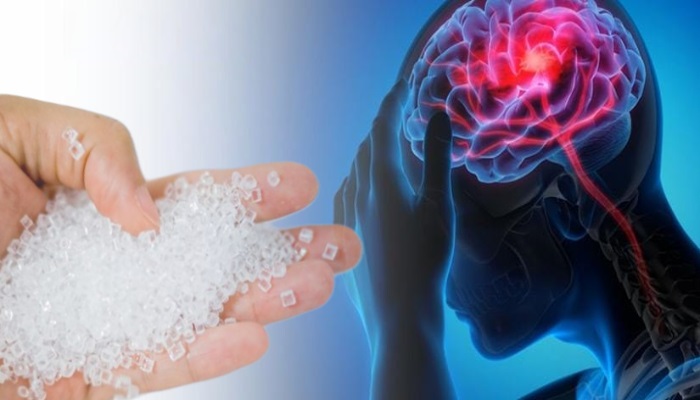A recent study is revealing possible links between widely used plastic chemicals and neurodevelopmental disorders, presenting insight into the intricate causes of conditions like autism spectrum disorders and attention-deficit/hyperactivity disorder.
The findings of the study could have significant implications for awareness of the environmental as well as genetic factors that contribute to these disorders.
Researchers from Rutgers University-New Jersey Medical School and also from Rowan University-School of Osteopathic Medicine in the United States conducted a study on 2 commonly used plasticizers, bisphenol-A (BPA) and diethylhexyl phthalate (DEHP). These plasticizers are frequently discovered in a range of consumer products. BPA is frequently used in the production of polycarbonate plastics, as well as in the manufacturing of PVC and also in the linings of food and beverage packaging. On the other hand, DEHP is responsible for regulating the strength of plastic materials.
The researchers examined whether there is any association between impaired glucuronidation, which is an essential metabolic process for these substances, and the occurrence of neurodevelopmental disorders.
Glucuronidation is a process that enhances the water solubility of substances, making it easier for the body to get rid of them. The study suggested that people who have impaired glucuronidation might be more vulnerable to the adverse consequences of plastic chemicals that involve BPA and DEHP.
The research team conducted an analysis of urine samples collected from three distinct groups of children, ranging in age from 3 to 16 years old. The groups consisted of children who had been diagnosed with ASD and ADHD, and also a control group of healthy children. Urine samples were collected and evaluated to assess the effectiveness of glucuronidation on BPA, DEHP, and other metabolites present in the body.
The findings of the study suggested a possible link between impaired glucuronidation and a risk to acquire neurodevelopmental disorders. Children with ASD and ADHD exhibited reduced efficiency in glucuronidation for certain compounds. However, the connections appeared to vary among various sub-pathways of glucuronidation.
The complex interplay
The researchers believe the findings of this study might point to a susceptibility to the negative impacts of plastic chemicals, specifically BPA and DEHP, which could be inherited. The findings bring up significant questions regarding the potential impact of individual genetic variations on a child’s capacity to purify these chemicals. This could potentially play a role in the onset of neurological disorders.
According to the authors, the primary means by which people are exposed to this substance are through eating habits and through ingesting food products that have been polluted through packaging. However, there is also some evidence suggesting that inhalation and personal products may also play a significant role in exposure.
The study offers valuable insights into the intricate relationship between environmental and genetic variables in the growth of ASD and ADHD. However, additional research is necessary to investigate the processes and repercussions of weakened glucuronidation. It is also important to gain a better understanding of the genetic factors that could potentially impact an individual’s vulnerability to these disorders.
The researchers point out that there is a significant amount of epidemiological evidence promoting a connection between neurodevelopmental disorders and environmental pollutants like plasticizers.
The study approach
The research introduces two distinct yet interconnected approaches for understanding metabolic pathways. The first approach concentrates mainly on the efficacy of glucuronidation, while the second approach explores the relationship between glucuronidation pathways and the body’s metabolome. Genetic factors have a significant impact on the efficiency of glucuronidation, which in turn influences these processes.
The research findings indicate a significant correlation between decreased efficiency in the glucuronidation of BPA and the occurrence of both ASD and ADHD. These results support previous evidence that has been reported. Surprisingly, the ADHD group also showed a correlation with the BPA pathway, emphasising a shared connection between impaired detoxification of BPA and both of these neurodevelopmental disorders. However, the control group did not show a connection with any of the glucuronidation pathways.
The second approach boosts the metabolic data by examining how the 12 glucuronidation pathways are connected to the metabolome and clinical diagnoses, thereby providing improved comprehension. The study found that more than 90% of the significant relationships in both the ASD and ADHD groups showed positive results for the BPA and MEHP pathways. This finding further supports the link between impaired plasticizer detoxification as well as neurodevelopmental disorders.
The study also emphasises the possible repercussions of this weakened detoxification process. Research has shown that both BPA and MEHP have the ability to disrupt the endocrine system, impacting an array of metabolic functions, including gene expression and oxidative stress.
These compounds have been linked to foetal growth, development, and behavioural impairments in rodent models. Children with ADHD show noticeable metabolic differences when compared to control children. These differences include increased protein turnover, amino acid flux, and basal metabolic rate.
The future scope
It is important to acknowledge that this study offers useful information on the connection between plasticizer exposure and neurodevelopmental disorders. However, it is worth noting that there may be other pathways that additionally play a role in the growth of ASD and ADHD. That said, the findings suggest that a considerable portion of these conditions can be attributed to neurodevelopmental disorders triggered by plasticizers.
However, the authors of the study acknowledge certain limitations. It is important to take into account the clinical and biological diversity of children with ASD and ADHD, in addition to the relatively small sample size.
Furthermore, the study primarily concentrates on a particular point in time and does not include information on how neurodevelopmental diseases affect the sulfation pathway. BPA and MEHP serve as indicators for additional unidentified compounds that are metabolised through similar pathways.
In summary, this research provides valuable insights into the link between impaired plasticizer metabolism as well as neurodevelopmental disorders. It points out the importance of conducting additional studies that investigate the connections among genetics, environmental factors, and metabolism in the formation of these conditions.


















